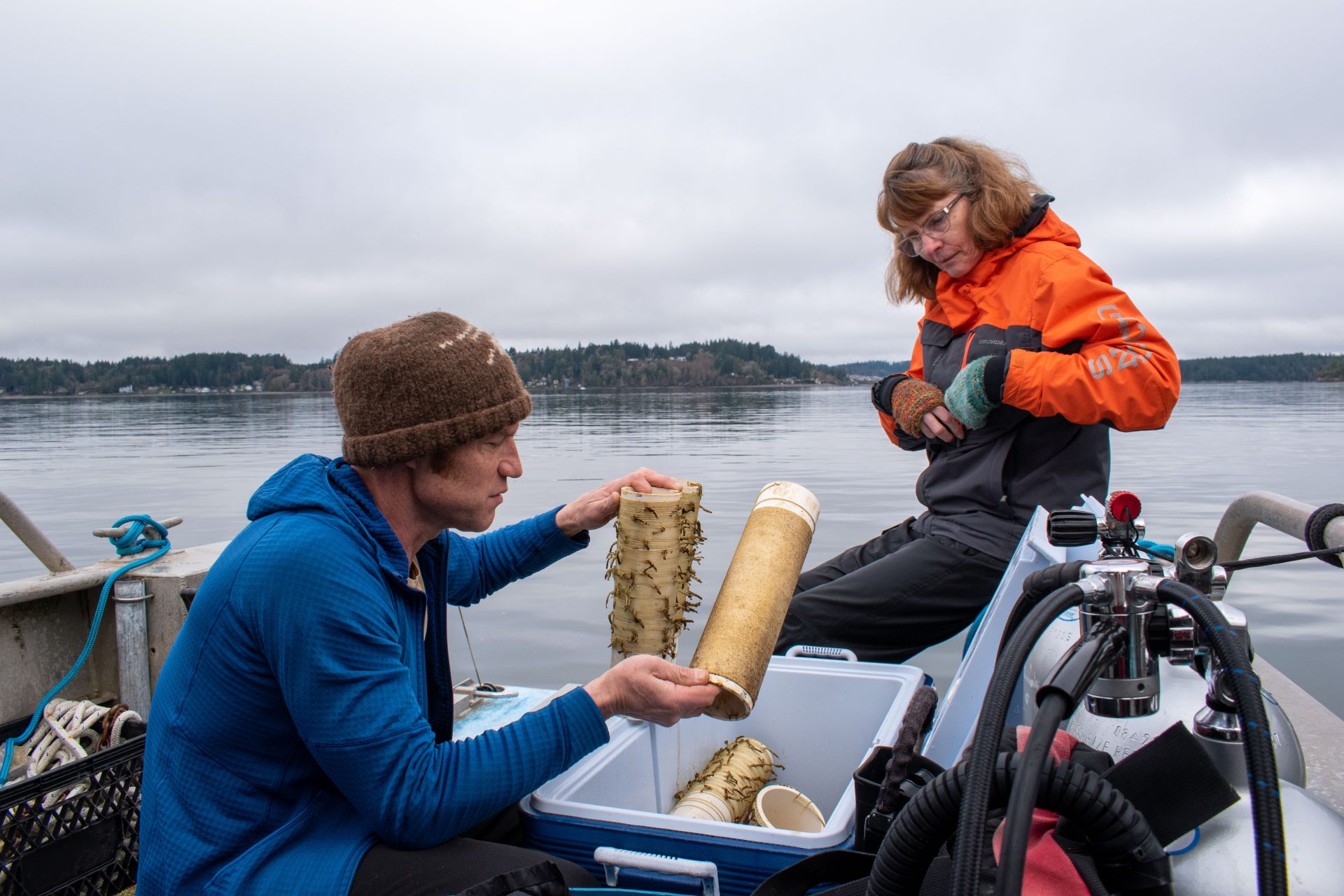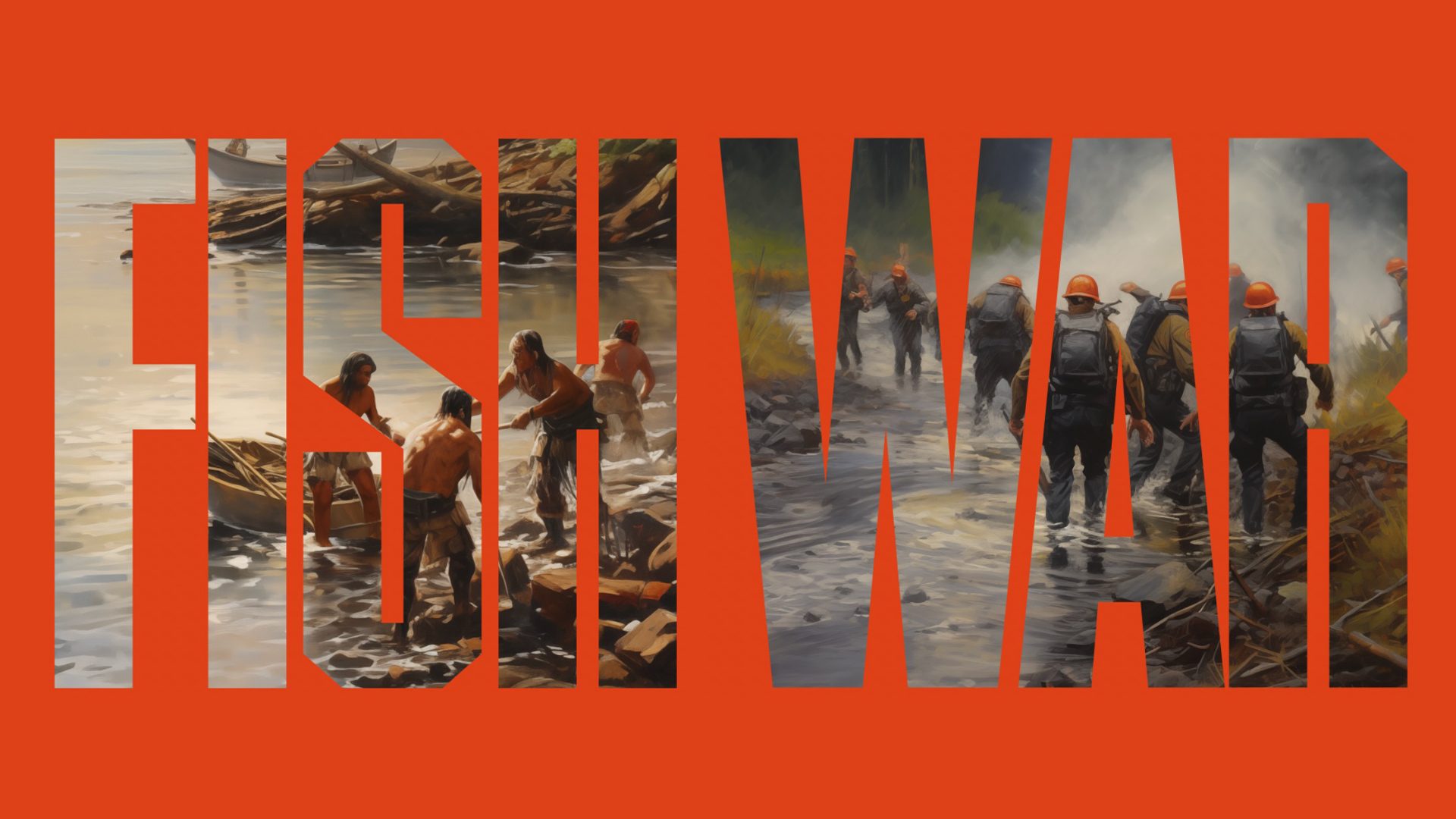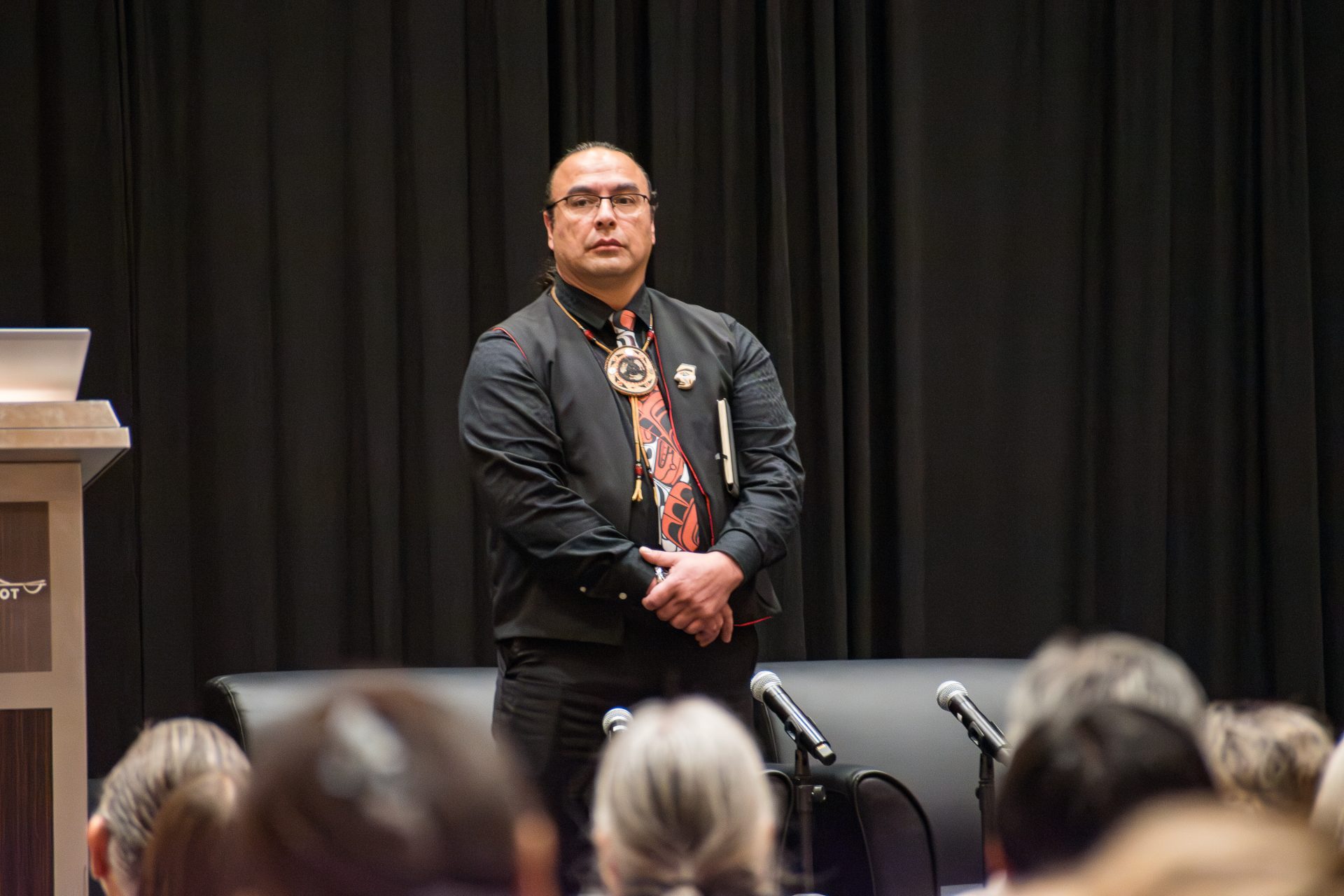A bull kelp forest in Squaxin Island Tribe waters has shrunk dramatically in recent years, with the population plummeting from thousands of plants to fewer than 100.
Given bull kelp’s cultural and environmental importance—as an ecosystem bellwether, food web builder, and habitat for forage fish and other species—its reduction is a shock. But this spring the tribe and partners including Puget Sound Restoration Fund (PSRF) and Washington Department of Natural Resources (DNR) pooled their knowledge and resources to string 1,500 feet of kelp-seeded lines underwater, in their first effort to help the resource thrive again.
“As we watch all the other kelp beds reduced, especially in South Sound, to have one on the reservation is a big deal,” said Squaxin Island Tribe environmental program manager Scott Steltzner. “We don’t want to study another kelp bed going into extinction.”
Scientists have been concerned about the pervasive loss of South Puget Sound kelp beds for years, consulting navigational charts dating as far back as the 1870s to bolster a recent study of the beds’ decline over more than a century.
But the kelp bed on the reservation seemed relatively hardy—until recently.
While the Squaxin Island Tribe’s kelp bed had been shrinking over the last decade, the loss accelerated acutely last year—following a heat wave between 2013-2017—and spurred the tribe and partners to action.
Helen Berry, who has monitored kelp for decades as part of DNR’s nearshore habitat program, approached the kelp forest’s anticipated location in spring 2022, only to find nothing.
“We went out to do annual monitoring and there were no bull kelp,” she said.
Further checks found only 85 plants, a number that could make it difficult or impossible for the population to survive without intervention.
“We were all shocked and traumatized about how small the bed was. Until now, the forest at Squaxin Island has provided hope that bull kelp can persist in some locations despite losses in many others,” she said.
The tribe shared the shock, Steltzner said.
“In other areas, when you have this dramatic of a collapse, it means you won’t have a kelp bed next year,” he said.
To save the kelp, the tribe partnered with the nonprofit Puget Sound Restoration Fund, which is dedicated to restoring marine species and habitats, and has a particularly sharpened interest in bull kelp. As part of its effort to develop a bull kelp restoration practice, PSRF has been building a kelp seed bank in partnership with Filipe Alberto at the University of Wisconsin-Milwaukee and NOAA.
It was because of efforts to preserve seed that PSRF had the necessary material to seed a new kelp bed at Squaxin Island, an effort the tribe led in March.
“The tribe is leading this, and we’re all assisting in whatever ways we can,” said Betsy Peabody, PSRF executive director. Peabody noted that state Sen. Christine Rolfes and the Washington state Legislature have provided crucial funding for restoration, the seed bank, and critical research into conditions that drive decline. Funding approved for 2023-2025 will provide continued support for the Squaxin Island kelp project. Additional funding for PSRF’s work with the tribe came from The Builders Initiative, The Pew Charitable Trusts and NOAA.
The kelp outplants are a critical first step; they increase the potential for the bull kelp to successfully reproduce by increasing the size of the population. Other stressors also threaten the bed, notably water quality degradation, rising ocean temperatures, competition with invasive species and grazing.
Early monitoring hasn’t detected any juvenile bull kelp on the seeded lines, but it’s considered too early to judge success or failure in this multi-year effort.
The project’s partners continue to monitor the lines and the surrounding habitat to better understand both environmental conditions and kelp response.
The anchoring system installed this spring is in place for future restoration research. Further work to save kelp is slated for the months and years ahead, and the tribe hopes to see benefits of concerted action for the health of kelp, as well as the marine creatures that feed in it, hide in it and benefit from it.
“We hope to see rapid recovery, but we’re committed for the long term. We know that ecological restoration is tricky, yet it’s also crucial to the well-being of both humans and the environment,” Steltzner said.
Brian Allen , habitat restoration direction of Puget Sound Restoration Fund (left) and Helen Berry, a marine ecologist with the state Department of Natural Resources, inspect bull kelp seed, which the Squaxin Island Tribe and partners strung underwater in the first step of a long-term effort to revitalize bull kelp. Story and photo: Trevor Pyle





